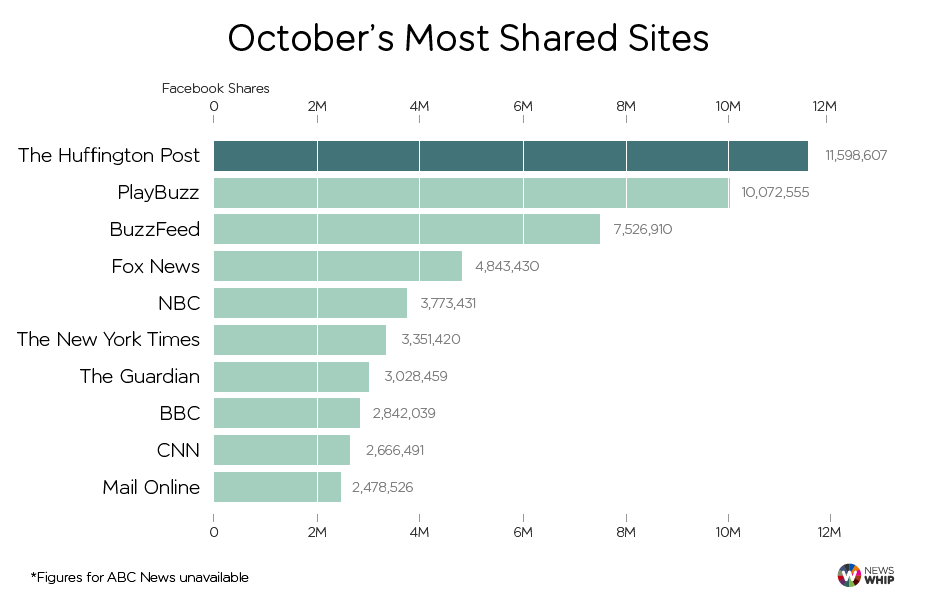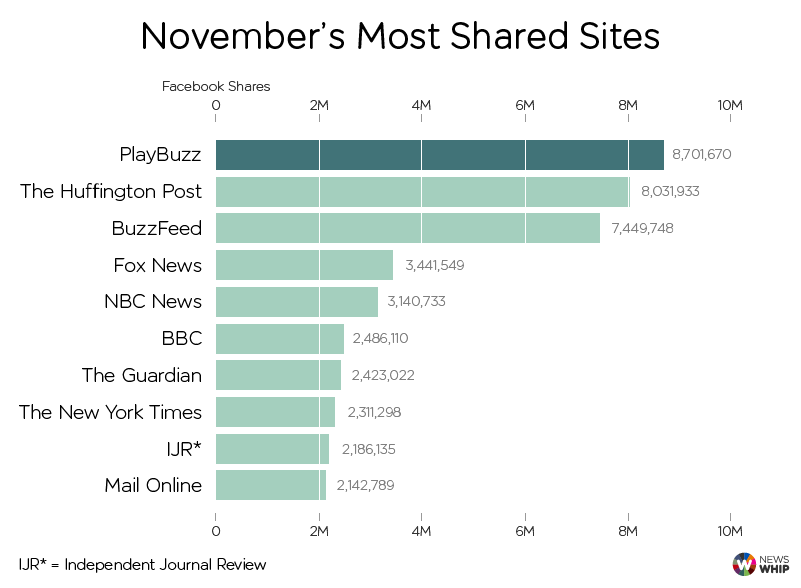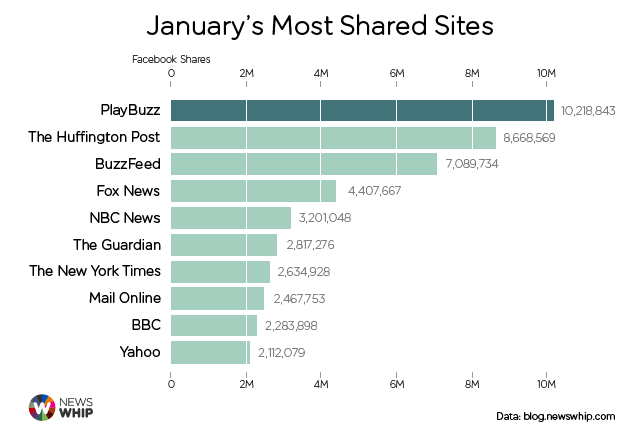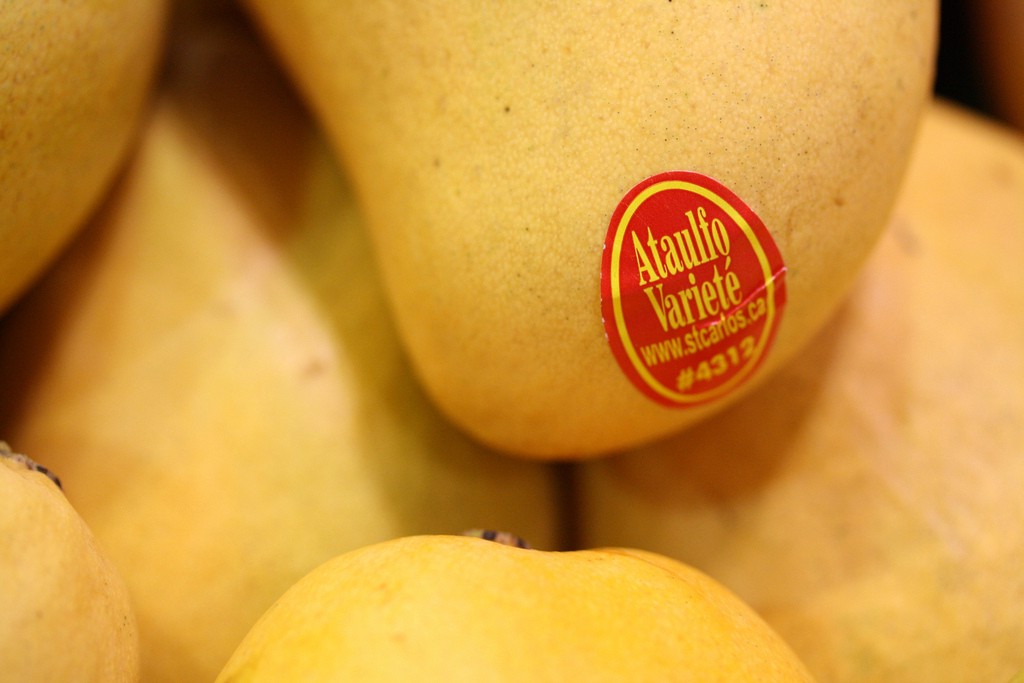New York City, March 30, 2015

★★ Clouds that had seemed to be lightening and separating condensed instead into a darkish gray mass with a strong wind blowing under it, and still no leaves to break it. The school dropoff was late enough and cold enough to discourage the commute. Through the windows by the couch, the brightness arrived at last, till for a while clouds were thin and white, spread out against the blue. Then solid-looking puffs of cumulus arrived, and began clumping and darkening. The afternoon wind had not changed its essential character from the morning, but in the light — and before the vicinity of the river — it could be taken as invigorating. The children were inspired to run in it. “The sky looks like paint, Dad!” the three-year-old announced in the later afternoon, looking out at new formations of blue and white. “The clouds!” The sun, when it lowered, executed at least a double bank shot to blaze from the northeast corner of the apartment towers. Now the clouds were purple, edged with rose gold, and then plain purple, against a lemon sky.
Promise Kept

According to websites, a much larger website is no longer paying as much attention to them:
A staff member at one major UK publisher described the [reduction] in engagement as a ‘Faceboocalypse’, and said that his team had noticed “a change to news feed algorithm which drastically reduced the reach of many news sites’ posts”. The Huffington Post also acknowledged that they had seen a fall-off in Facebook engagement in recent weeks.
NewsWhip’s data team noticed the reduction when analysing data for the biggest Facebook sites of February 2015. A wide range of top publishers, including BuzzFeed, the New York Times, Fox News and more seem to have been affected.
The 100 most shared English language stories (which include quizzes and other viral content) on Facebook in February had just over 10.2 million combined engagements, compared to over 16.4 million for the same set in January.
This report from NewsWhip suggests that the consequences of Facebook favoring posts that don’t link readers away from Facebook (it’s sort of obvious when you say it like that!) are already being felt.
NewsWhip’s monthly rankings of most-shared sites used to be a little more exciting and surreal — early last year, a Viral Nova or an Independent Journal Review would just materialize out of nowhere, displacing, say, a USA Today. They have remained, month to month, reliably valuable for understanding what seems to be going on in the fetid content trenches (Contrenches). It is good to know, for example/I guess, that the top external site on Facebook is a publication composed almost entirely of quizzes. Anyway, something weird started happening late last year.
Here are the last four rankings:




The order didn’t change thaaaat much. It looked like publishers were settling in! And the general internet media narrative of this period was, by default, one of extreme growth. Big online news operations hired a lot of people, smaller ones got funding, new ones were summoned into existence from mid-tier VCs who suddenly felt like their portfolios were lacking in a certain virality. Here, however, are the total shares split between the top ten sites on Facebook:
October: 52,181,868
November: 43,214,987
December: 39,519,886
January: 45,901,795
This only includes the biggest publications, so it doesn’t tell us if the infinitely more numerous smaller sites are growing or shrinking, share-wise. And it’s only a few months! But this does not tell a story of clear, huge growth. The sites most successful at getting people to follow links on Facebook seem to have been hustling, against more and more competition, for a pool of shares that isn’t necessarily getting bigger.
This makes sense! People have been sharing links on Facebook for a long time, and publishers have gotten good at making sure those clicks lead in particular directions. At some point there had to be enough links — to news, to YouTube videos, to CONTENT — to satisfy whatever attentional deficit News Feed was operating with, and so competition was bound to get tougher.
But suppose NewsWhip is right. Suppose the share pool for outside sites is not just stable but getting smaller, because Facebook users would rather share videos than links to sites that embed videos. And suppose that Facebook is very happy about this because Facebook is a company motivated by obvious and understandable self-interest. Fine! The internet is a big place. But suppose you’re a large website that gets half or more of its traffic from Facebook, but only after a years-long investment in getting traffic from Facebook. Suppose your links have served their duty and are now being sent home. Now what? Funny you should ask!
Gif from Gizmodo
Subscribe to the Awl Newsletter
by The Awl

For all of their remarkable qualities, newsletters can be very boring, because they are, by definition, rote enterprises. They change so little. This is why the current Awl management has largely forsaken them in favor of the dynamic world of Periscopekatting. But then there is Laura Olin’s Everything Changes. It changes a lot. Weekly, even. The format, the concept, the tone, the frequency — everything changes. But constant mutation is just one of the many reasons we love Laura’s newsletter: It’s slightly weird, super sharp, comfortably personal, not a little amusing, and, perhaps most important of all, it’s very brief, and never boring. These are all qualities that line up extraordinarily well with the Awl’s editorial vision.
So, after a brief conversation with Laura, Everything Changes will now be delivered under (over?) the Awl banner. The first one just went out. Sign up! We think that you’ll like it.

But wait! I have questions!
Oh?
What if I already subscribe to Everything Changes because it’s wonderful? Will I get TWO newsletters?
Nope, in that case, nothing changes. Well, almost. There’ll be a tiny Awl logo and maybe a link or two you that you can totally ignore.
Are you going to ruin Everything Changes?
Maybe. But hopefully the things you like about Everything Changes will get even better, because Laura will have some additional resources to change more things.
What if I’m subscribed to the Awl newsletter? Will I like Everything Changes?
Hi! We missed you! But we feel great after such a long nap. Anyway, you’ll start receiving Everything Changes as soon as…tomorrow. Just think of it as a tiny Awl post, sent directly to your inbox, on hand-stamped, artisan-crafted local stationery.
Is this a prank?
Maybe?
If you have other questions, do leave them in the comments.
On Doing Ecstasy As An Old Person
“When you’re a kid, you think you’ll be a certain place in your mid-30s. I presumed I’d be rich because when you’re middle-class with hardworking immigrant parents that’s the whole point. I also thought I’d be married and potentially own a beautiful apartment in New York. Ha ha. What you spend zero time wondering about is whether you’ll still be doing drugs. You naturally assume you’ll grow out of whatever stupidity you dabbled in as a teen. Even up to my 20s I didn’t realize that job-having, non-fuckup grown-ups in their 30s and 40s still smoked weed. Or did ecstasy. But then I got older and got bored.”
Eat the Mango (No, Not That One)

The end of March is still a dead zone for produce here in the Northeast, but in Mexico and further south to Peru, one of the world’s most diverse and most popular fruits, the mango, is beginning to enter one of its two seasons (the other is in early fall). Even though our neighbor to the south is one of the world’s biggest producers of mangoes — and Florida grows a pretty respectable number and hosts what looks like a delightful festival focused on the fruit — the mango is underappreciated and underused in the United States. This should be a crime! We should all be arrested!
If you live in a place without a substantial Indian or Mexican population, there’s a pretty fair chance the only mango you’ve ever seen is the Tommy Atkins: a large, red-green mango with a giant pit and a fibrous interior that gets stuck in your teeth. The Tommy Atkins is one of those accursed fruit varieties, like the Red Delicious apple, that is an insult to its brothers and should be banished from the planet. The Tommy Atkins is the worst possible example of the wonders of the mango: weak in flavor, egregious in texture, and popular exclusively because it is large, easy to grow, and tough enough to withstand transit.
The Tommy Atkins mango was created by Thomas Atkins in Broward County, Florida from a tree planted in 1922. Atkins was very pleased with his shit mango; he thought it would sell well because it is large and pretty and does not bruise easily. He was right, although it took awhile for the variety to catch on. Throughout the early nineteen fifties, Atkins kept trying to get the Florida Mango Forum to approve it; they did not, citing its subpar flavor and texture, but eventually the growers, rather than the tasters, won out. The Tommy Atkins today is by far the most common variety in the U.S., which is embarrassing as heck.
There are thousands of varieties of mangoes, ranging from giant grapefruit-sized mangoes to tiny plum-sized mangoes, dark purple mangoes to delicate golden mangoes, and flat oblong mangoes to nearly spherical mangoes. The textures range from so creamy you need to use a spoon to so crunchy you need to use a fork (or chopsticks), the flavors from crisp and vegetal to heavy and sweet. Most mango varieties do not travel well, unfortunately, and there’s not much of a market in shipping some of the weirder ones all the way from, say, the south of India, where mangoes are as beloved as apples in New York. That said, if you live in a city, or in a place with a healthy representation of certain immigrant groups, there’s a pretty good chance you can find a mango that’ll totally change the way you think about them.
Mexican and Indian markets are, I find, the best places to find good alternate types of mangoes. In New York City, Jackson Heights, in Queens, is a good bet, as is Sunset Park in Brooklyn. And one of the more common non-Tommy-Atkins varieties, the Ataulfo (or Champagne) mango, is just coming into season now. The Ataulfo mango is small, yellow, and kidney-shaped. Its pit is very thin, meaning it’s easy to remove by the only acceptable method, which I’ll get to in a second. The flavor is significantly stronger than a Tommy Atkins; it is much higher in both sugar content and acid, meaning that classic sweet-and-sour mango flavor is kind of supercharged. The flesh, a deep golden yellow, is not fibrous at all; instead it is smooth, creamy, and soft, closer to a ripe avocado than the pear-like stringy flesh of a Tommy Atkins. It is not the best mango in the world — I doubt it wins mango competitions, which totally do exist — but it is the mango that Americans should have been eating all along: an all-purpose mango, a pure expression of mango-ness.
Ataulfo mangoes do not travel as well as Tommy Atkins mangoes, so you have to be a bit more circumspect when shopping for them. When ripe, the Ataulfo is golden all the way around — no green, and no black speckling like on a ripe banana. But no wrinkling, either; if they’re wrinkled on the outside, they’ll be overripe and sort of gross on the inside (though not garbage necessarily!) If you give them a little squeeze with your thumb, they should give just a touch, like a ripe avocado.
So there are a bunch of ways to peel a mango (unlike the kiwi or peach, eating the skin adds nothing at all to the experience of eating a mango and it can sometimes causes an allergic reaction), but most of them are wrong and dumb. Do not use a vegetable peeler, as this will leave you with a slippery fruit that is hazardous to slice, like trying to dice a wet bar of soap. Do not use one of those mango pitters; they waste precious mango flesh and, as always, you should be good at using your knife. If you’re not good with a knife you should use your knife even MORE so you BECOME good with a knife. Stop buying tools that encourage you to not learn this very basic skill.
No, the proper way to slice a mango is, basically, this one, brought to you by a Supermarket That I Never Go To Because It’s Neither Cheap Like Key Foods Nor Charming Like Trader Joe’s. The last step there, where he cross-hatches the mango, I don’t do that one. Instead, I slice the “cheeks” of the mango into three strips. Then I place them skin side down on the cutting board and place my knife just above the skin and my non-knife hand on the cut side of the flesh to hold it in place before sliding the knife along the skin to remove it. I think it’s a little faster, and for whatever reason I like slices of mango rather than cubes, but do whatever you want. Also, Alton Brown has some insane peeling method that involves a magic marker, but that is ridiculous.
An odd thing about mango is that cooking it, generally, does not help it. The aromatics and flavor compounds tend to be destroyed rather than pleasantly altered with the addition of heat. Sometimes that’s fine; ambya sasam, a sort of mango curry, relies on that destruction to de-sweeten the mango so it can become a savory sauce. But mostly, heat tends to lessen the flavor of mango, which is why you don’t see many mango pies or mango crumbles. On the other hand, it has such a high sugar content and such a creamy texture that it does very well in a puree, which is why mango sorbet and mango lassi are so common. This is another way of saying, sorry, the recipes this week are not very elaborate, because really, the best way to eat mango is to just…eat the mango. Still! Here are some things to do with them.

Chili-Mango Popsicle
Shopping list: Ataulfo mangoes, ground cayenne, salt, lime juice, sugar, popsicle molds
The combination of mango and spice or salt is common pretty much anywhere mangoes grow (except Florida, boo Florida). In Mexico, mangoes are commonly sold on the street doused in vinegary hot sauce and salt, sometimes on sticks, sometimes in plastic ziplock bags, and sometimes as paletas, or popsicles. (Good LORD are Mexicans good at popsicles.) To make: Dice a couple of ripe Ataulfo mangoes and toss in a food processor. (Note: this is one place where an overripe mango will actually be okay! Overripe mangoes are sweeter, so you’ll need to go heavier on the lime and salt, but will work fine in a puree.) Blend thoroughly. This will result in a kind of syrupy sticky-looking substance. Add in a pinch of cayenne, a pinch of salt, and a squeeze of lime. Blend again to mix. Then add in a bit of water to thin it out, maybe a quarter cup per mango. Taste. It should be very sweet, pretty spicy, and a little salty. You may have to add more sugar; the secret to good popsicles is that the mix should always taste sweeter when it’s liquid than you think it should. Pour into popsicle molds and freeze overnight. These are, of course, better in the summertime, which in New York is roughly six months away.
Coconut Brown Rice Pudding With Mango
Shopping list: Ataulfo mangoes, medium-grain brown rice, can of coconut milk, whole milk, brown sugar, vanilla extract, ground cardamom, ground clove, unsweetened shaved coconut
This is a recipe basically stolen from Mark Bittman, who had the brilliant idea to blitz the rice in a food processor, which gives the final pudding a creamier texture more like Thai sticky rice, on which this is a riff. Pre-heat your oven to 300 degrees. Put about a half a cup of regular brown rice in the food processor and hit the “pulse” button maybe three times; you don’t want powder, you just want a little breakage. In a dutch oven, mix the broken rice, a can of coconut milk, one and a quarter cups of whole milk, half a cup of brown sugar, a few healthy pinches of salt, a pinch of cardamom, a pinch of clove, and a few drops of vanilla extract. Put in the oven for forty-five minutes, stir, another forty-five minutes, stir, and about another forty-five minutes should do it. It’s done when it’s still kind of soupy but the rice is cooked through. Let it cool for about half an hour at least and it’ll thicken right up.
While it cools, take a cast iron pan and put it on the stove over medium heat. When hot, toss in a handful of the shaved coconut and toast, tossing frequently, until golden brown. Remove and let cool. Then dice up a bunch of mangoes. You can serve warm but I like it better cold (it’ll take overnight to cool, probably). In a bowl, plop a big scoop of rice pudding. Top with diced mango, the toasted coconut, and, if you want, a pinch of cinnamon.
The Best Mango Recipe
Shopping list: Ataulfo mango
Remove pit and skin from mango by the previously stated approved method. Eat with fingers or, optionally, a fork.

I worry sometimes that the mango is unappreciated: It commits a few sins against the very American love of convenience, in that it is not a hand fruit and requires a knife to prepare, and also in that it is pretty delicate and perishable and you might have to go to an ethnic market to find it. And yet: mango is perhaps my favorite fruit of all; good ones are easier to find than good peaches, or pears, or apples, at least when you have an easily available supply of Ataulfo mangoes (and more and more supermarkets are starting to carry them!). Their flavor is so intense, a punch in the face of sugar and acid and creaminess and a flavor that we idiots who choose to live in New York still associate with tropical beaches and palm trees. God damn I love mangoes.
Photo by Danielle Scott
English Monarch Signatures, Ranked
by Ben Crair
28. Edward VI (1547–1553):

27. Philip (1554–1558):

26. George IV(1820–1830):

25. Henry IV (1399–1413):

24. Richard II (1377–1399):

23. Anne (1702–1714):

22. Henry VIII (1509–1547):

21. Henry VII (1485–1509):

20. Edward IV (1461–1470; 1471–1483):

19. James II (1685–1688):

18. William III (1689–1702):

17. George I (1714–1727):

16. Edward VIII (1936):

15. William IV (1830–1837):

14. Charles II (1660–1685):

13. Mary I (1553–1558):

12. James I (1603–1625):

11. Elizabeth II (1952-present):

10. Victoria (1837–1901):

9. George VI (1936–1952):

8. Henry VI (1422–1461; 1470–1471):

7. Edward VII (1901–1910):

6. George II (1727–1760):

5. George III (1760–1820):

4. George V (1910–1936):

3. Elizabeth I (1558–1603):

2. Richard III (1483–1485):

1. Jane the Queen (July 10–19, 1553):

N.b.: This is entirely sourced from Wikipedia, so.
Aberdeen, Maryland, to New York City, March 29, 2015

★★★ The thermometer on the glass of the kitchen door said 32 degrees when the seven-year-old got boosted up to read it. Shining ice lay in the junction where the tributary country road curved to meet the marginally larger stem road. More ice sat in the flooded parts of the stubbled fields, which were colorless as the leafless trees between them. The lump in the top of the three-year-old’s hat contained his gloves; his hands, clutching their palm fronds, were cold. The daffodils in the bed alongside the stone church were drooping over. Back by the house — 39 degrees now — squirrels dug through the seed hulls scattered below the bird feeders, in front of the bed of snowdrops. Nuthatches and titmice and chickadees came and went, and goldfinches the color of parchment. A Cooper’s hawk, twitching balefully, commandeered a low branch for a minute, then flew off toward the garage with or without something clutched in one foot. The little birds resumed their feeding. The sun falling through the near-closed blinds made the water in the toilet shine like a lamp in the dimness. Forty-six degrees after lunch, at car-loading time. Everything in the drab length of New Jersey was sharp-drawn and distinct, save only the firm new roadway dissolving ahead into a mirage of sky and car paint. Vultures were as abundant as Turnpike exits, naked heads visible at 70 miles an hour, give or take. There was nothing remotely resembling a cloud; a light haze was salient by default. The bulge of the gibbous moon seemed to grow fatter as it came into focus. Trees and balconies gleamed in the city. The layer of dust on the unwashed apartment windows was coppery in the sunset.
Stream The New Waxahatchee Record
Ivy Tripp, the latest album from Waxahatchee, is out next Tuesday. You can stream it here, and you should: It is, at the moment, the best record to be released this year.
Coloring Enjoyed
As someone whose dour demeanor and seeming lack of charity has caused him to develop a reputation for negativity I decided recently that I would try to approach all new endeavors with a certain generosity of spirit, i.e. I would assume that everything I came across was constructed out of a sense of sincerity, or at least genuine curiosity, rather than obligation or outright cynicism. As you might imagine (and it does me no credit that I was unable to foresee this inevitable result, but I suppose this is what comes of unbridled affirmation) this was an experiment I needed to terminate almost immediately, as it soon became clear that looking at the current climate of creativity through a lens of good intentions results in an even more frightening feeling about what we are offering up to the world, which is to say that so much of the garbage with which we surround ourselves is only tolerable if you convince yourself it originates from a disingenuous place; the idea that these things do not come from bad faith or desperation or a slavish imitation of what is already terrible but instead are conceived by their creators as worthwhile and positive contributions is so distressing as to make one wish the asteroid on its way over to wipe out our species would put on some speed. That said, I want to find at least a little light in life in the time I have left, so my alternate strategy has been to discover at least one hobby or obsession each week about which I in my normally terrible way — and believe me, as bad as everything is (and everything is terrible and only getting worse) I am a hundred times more horrible; part of why I allow myself to judge so harshly is I have higher expectations of everyone else, knowing that they are nowhere as awful as I — would tend to be dismissive and instead see the good in it. So then, adults who like coloring books: I did not know that they existed until now, but in keeping with my commitment to positivity I will just say that in a world where there is unrelenting horror beamed at you from every direction each day and the last time you actually felt somewhat secure was when you were too young to be allowed to make your own decisions (and before you came to the sad realization that each decision you made would not only be bad but would lead you down a path of choices progressively more poor), I can appreciate the comfort and strange sense of freedom these people must have as they experiment with hues and shades in the patterns provided, providing as they do the pleasant memories of a simpler time when a piece of paper and some crayons were the ticket to a world of expression in which even the existing lines were only suggested guidance. In a strange way I almost admire their ability to do this without a shred of self-consciousness. Good for you, grown-up colorers: I wish I were more like you in that regard. On an unrelated note, this is probably the last attempt I will make at this experiment as well.
How to Sell Bottled Water to Thirsty Bros
by Matthew J.X. Malady

People drop things on the Internet and run all the time. So we have to ask. In this edition, writer Andrea Ayres-Deets tells us more about the thirst for wholesome hydrating water.
Tech bros at coffee shop are surrounded by various coconut waters, debating their finer complexities.
— Andrea Ayres Deets (@missafayres) March 24, 2015
Andrea! So what happened here?
I live in Palo Alto and work remotely. So every day at around 1:00 p.m., I usually venture off to one of the various coffee shops around town.
It’s fairly common to see and hear people pitching products, having meetings about their startups, and yelling at one another about code. Invariably, I find myself listening in. Tuesday was no different. As I sipped my coffee, I observed the communal table in front of me — two men were sitting at the end of it surrounded by various coconut waters and water bottles. I counted at least seven different kinds of water.
One of the gentlemen was apparently a water industry veteran. He wore a black pullover sweater with dark denim jeans and had the kind of carefree confidence only someone who had been successful in selling water to people who have the stuff running out of their faucets could possess. He looked like the progeny of Eugene Levy and Harvey Keitel. This was a man with answers, and the dude sitting across from him wanted those answers, desperately. Young tech bro had a startup. He was the founder of a sports drink — water that wasn’t just water, it was more than water!
Early on, they sat there for a time talking about which words they should use: “Superior hydration”? “Natural hydration”? “Quench, nutritional, hydration”? Then the startup bro attempted to clarify the target audience, which he described as: a weekend warrior, businessperson, athlete-triathlete, health-conscious progressive with an attention to detail who was both aspirational and locational.
The older man piped up: “You want to create a sort of harmony! You have to have a sense of purpose. Water has to be functional.” He launched into a discussion about the importance of packaging by grabbing an Essentia water bottle (a form of alkalized water that boasts a pH level of 9.5). “People essentially have no idea how labels work,” he said. “They think ‘Oh I need that much fiber or that much protein,’ but they get very confused by it.”
The younger guy kept on circling back to his product, to specific “challenge points” they were now facing. (“We don’t want to be drawn into a discussion of which water is better,” he noted. “No, no, no of course not,” the grizzled water-marketing veteran agreed.) He discussed how they wanted to reach out to triathletes, a segment he believed was grossly underserved by the sports water community (which apparently is a thing that exists).
But before they could discuss broader marketing concepts, they had to talk about the science of water. The veteran imparted yet another water bombshell: “You have to have minerals! Minerals must be there. Purified water is science. Use science to help you! It’s a very technical scientific process, and consumers don’t understand that.” He suggested doing hydration studies to get a sense of how hydration works. Once the young dude had that information, he could take those studies to investors.
The Eugene Levy look-a-like raised his voice slightly. “Viscosity!” he exclaimed. “Do you know what that is?” No comment from the young guy. “Viscosity, you know like the fluidity, is going to be very big. It’s an emerging trend. What you want to do is establish your baseline viscosity for your post-workout…”
I tuned out for a moment, but came back around just in time to learn that having a successful water product is about three things: taste, packaging, and functionality. There had to be a way, the young man said, to differentiate their water from the other waters out there. “It’s not just water, it’s better than that!”
The expert replied with valuable water marketing lesson number 220: “Water should be non-intimidating.”
When the young man talked about this sports water drink being a good source of fiber, no “a superior source of fiber and a good source of potassium and protein,” the elder interrupted him. “You know you can’t just say, ‘this is good for the heart,’” he implored. Because people will say, “‘Well, where is the science?’ You’ve got to say it right.”
The two discussed the importance of making functional statements that are direct enough for the idiotic consumer to understand but vague enough to avoid entering into functional claim territory. The difference, evidently, being that one says how the water functions and the other implies some science that may or may not exist to back it up. The older man held up a coconut water bottle and read from the label: “The consumer thinks they know what all this means!” Water marketing, it turns out, deals in broad generalities because to use anything more specific may cause the consumer to ask pesky questions like, “Where’s the evidence to support this claim?”
“Is your product organic?” asked the older man.
“It’s organic compliant,” the tech bro answered.
“So, it’s not organic?”
“It’s not certified organic, no.”
This was a bit of a buzz kill, because now they couldn’t use the “certified organic label.”
The conversation was heating up and the exchanges began to come more quickly. “We can say its sweetened with natural flavors,” the young man said, to try and put a more positive spin on things. Then the a-ha moment came to them both at very nearly the same time. The catch phrase they’d been searching for: “Wholesome hydration!”
The older man’s voice got louder, his back straightened: “The word ‘wholesome’ is very California.
“People will see the words ‘wholesome hydration’ and think, ‘Hey no one’s talking about wholesome hydration, what is that?”
“Yeah, kinda get in on the Whole Foods thing,” the young man added.
They were amped now.
“It’s about everyday hydration. Healthy living. Elevate.”
“You can say the water supports a healthy diet, but you can’t rely on that. You have to tell a story, you have to build a community,” the older guy said.
The younger man knew all about this! There was a partnership they were considering, “with, like, the American Cancer Society or breast cancer or something . . . .”
This seemed to worry the veteran. “You have to be careful with partnerships or endorsements from major organizations,” he said. “You don’t want to associate your product with things like cancer. You want to avoid partnerships with things that are unhealthy. You don’t want to scare people, or make yourself a target.”
“True, true. What we want,” said the younger man, “is to be the fringe-premium, to cater to more of that techie image.”
Yes, it was all coming together now. Wholesome hydration — water that is better than water, because it’s more than just water.
And with that, their two-hour conversation wrapped up. The older man collected his water bottle samples and carted them off to continue his mission of bringing water to people who already have access to it.
But why do we need another brand of specialized water? We don’t, right? Why would anyone think we do? Maybe I’m missing something.
We may not need another brand of water on the market, but these gentlemen are hell bent on giving it to us anyway. Think about all the healthy tech bros out there doing their triathlons who don’t have a water that’s just for them. Consider the different segmentations of affluent white people who don’t have water specifically made with their exact niche interest in mind.
Lesson learned (if any)?
Whatever opinion you thought marketers had about consumers, lower it. Listening to these men talk, it’s hard to imagine how the average consumer manages to function day-to-day. To these guys, people are highly malleable, open to the power of suggestion, and extremely interested in pH balances, even if they don’t know what that means. All it takes is a scientist to prove something about hydration, use that as fodder for your investors, and there you go, instant capital.
As I listened to them discuss water, the science of hydration, impressive store display units for water, and the details of what the younger man dubbed a “high altitude bottle,” I wondered what their reality must be like. Whatever it was, I couldn’t imagine it being a reality most other people lived in.
Just one more thing.
Living and working in Palo Alto, I overhear lots of discussions like this one. They are the conversations of people who live in such an insular community that they can’t begin to understand how insulting or privileged their words sound to those who may be within earshot. Debating how to best market bottled water to a small segment of the population while the fourth year of an oppressive drought rages on seemed more than a little tone deaf.
Join the Tell Us More Street Team today! Have you spotted a tweet or some other web thing that you think would make for a perfect Tell Us More column? Get in touch through the Tell Us More tip line.
Photo by m01229
